Printmaking is an exciting art form that enables the artist to take an image or idea and, through several skilled printmaking techniques, produce both striking and unique prints. Printmaking techniques include woodcut, linocut, collagraphy, engraving, lithography, and monotype.
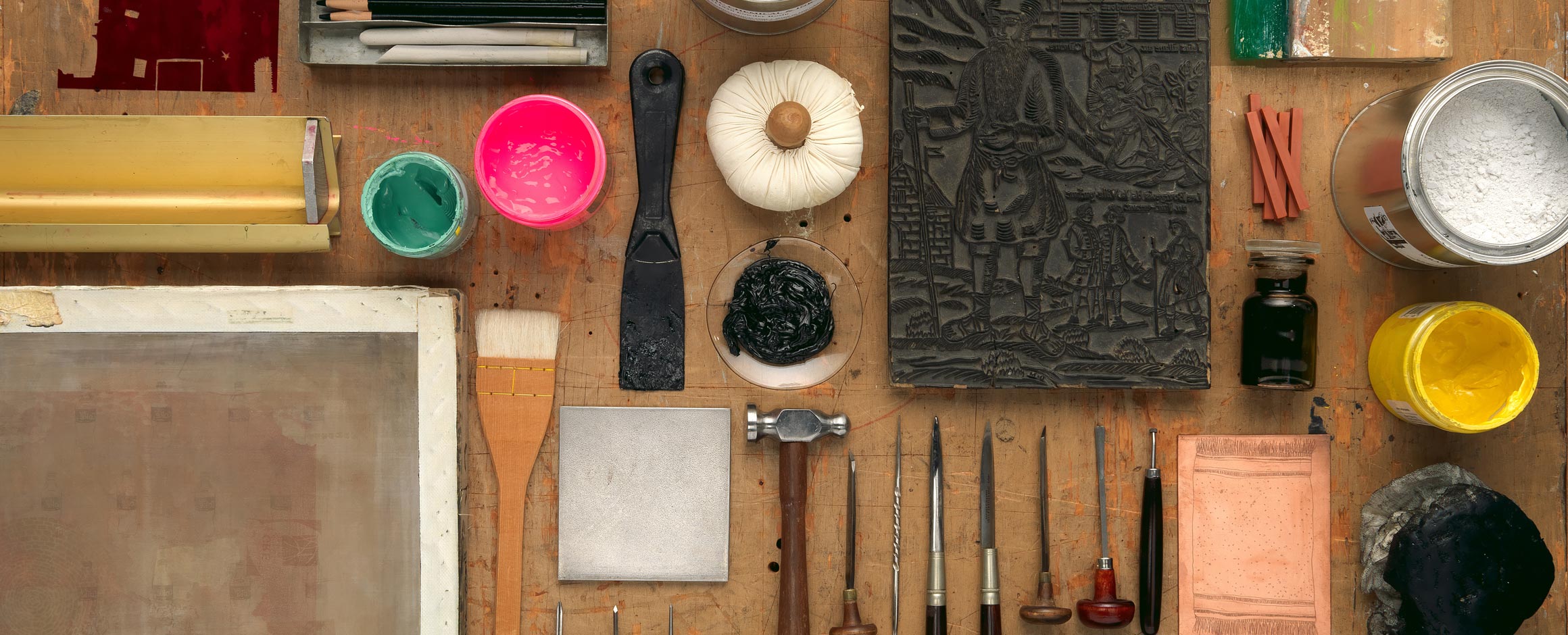
Image Credit: Met Museum
Woodcut
Woodcut is one of the oldest printmaking techniques and is a form of relief printing. The artist alters the surface of a block of wood with special knives and other tools and carves in the direction of the wood’s grain. One feature that sets woodcuts apart from other printmaking techniques is the residual wood grain texture the block leaves behind. The grain itself often becomes part of the print, showing itself through as a texture.

Image Credit: Katsushika Hokusai The Great Wave off Kanagawa (Kanagawa oki nami ura), from the series “Thirty-six Views of Mount Fuji” (“Fugaku Sanjurokkei”), 1830 -1833 Art Institute of Chicago
Linocut
Linocut is a printmaking technique similar to woodcuts using a sheet of linoleum, sometimes mounted on a wooden block, for a relief surface. A design is cut into the linoleum with a sharp knife, chisel or gouge, with the uncarved areas representing a mirror image of the parts that will show on print. The linoleum sheet is inked with a roller and then pressed onto paper or fabric. The actual printing can be done by hand or with a print press.
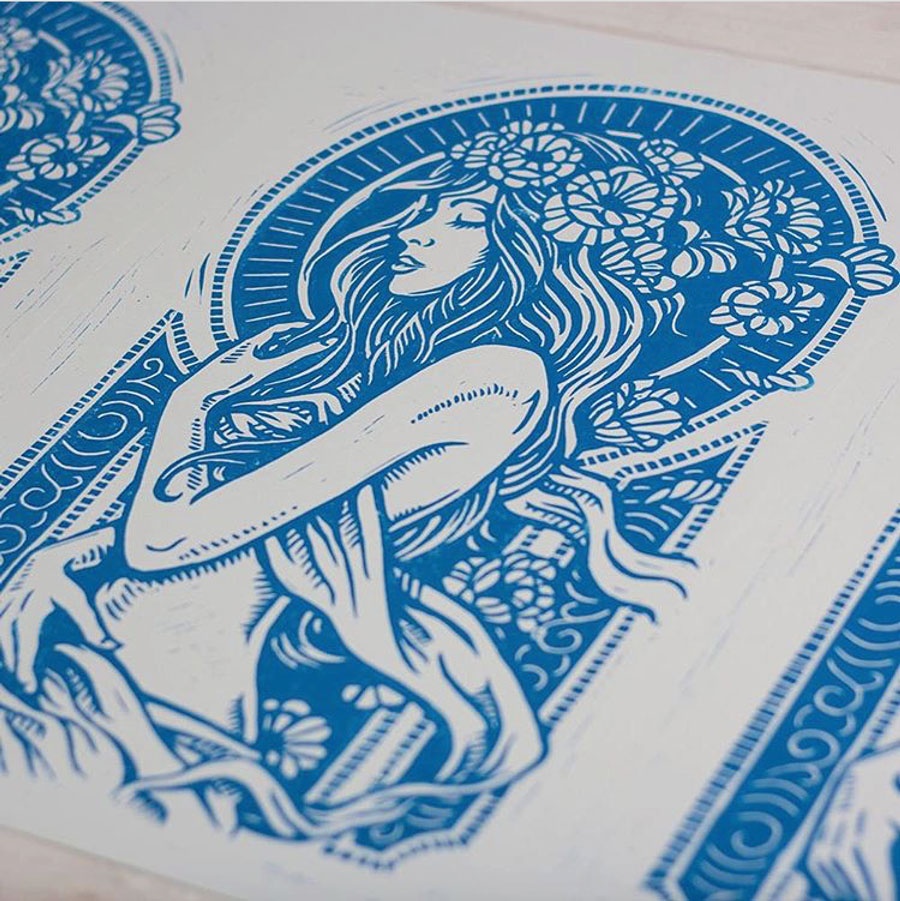
Image Credit: Linocut by Derrick Castle from Strawcastle
Collagraphy
Collagraphy is a versatile print process in which a textured plate is inked up and put through a press. Different textures hold varying amounts of ink and print different tones. Anything can be stuck down and used for example wallpaper, leaves, fabrics, tapes, plastic, and threads. The collagraph plate is then varnished and printed.
Image Credit: Hand Printed
Engraving
Engraving is the practice of incising a design onto a hard surface for instance silver, gold, steel or glass. Engraving is the oldest technique of printing and was historically used for mapmaking, illustrations for books and magazines.
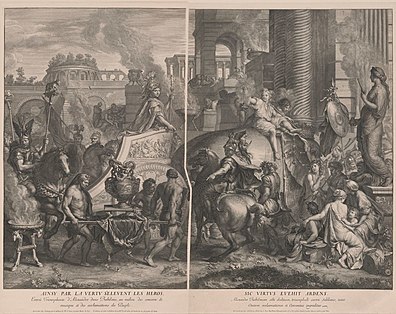
Image Credit: Alexander Entering Babylon. Gérard Audran after Charles LeBrun, original print first published 1675, engraving, National Gallery of Art, Washington, DC, Department of Image Collections.
Lithography
Lithography uses an image drawn with oil or wax onto the surface of a smooth, level lithographic limestone plate. The stone is treated with a mixture of acid and gum arabic, etching the portions of the stone that are not protected by the oil-based image. When the stone is moistened, these etched areas retain water; an oil-based ink could then be applied and would be repelled by the water, sticking only to the original drawing. The ink can then be transferred to a blank paper sheet, producing a printed page. This traditional technique is still used in some fine art printmaking applications.
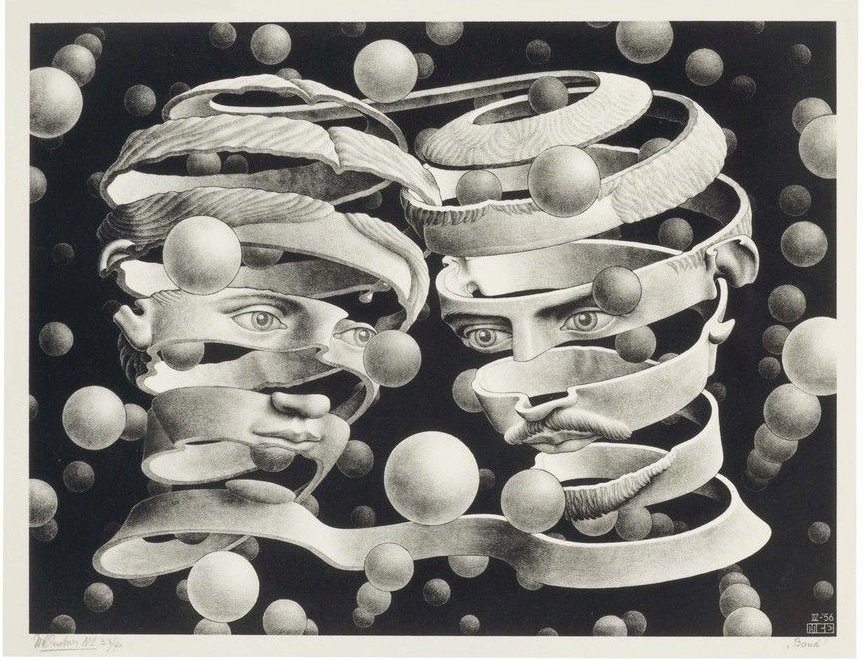
Image Credit: Maurits Cornelis Escher, Lithograph on Holland paper – Bond of Union, 1956 Christie’s
Monotype
Monotype prints are unique prints and not editioned like lithograph or lino prints. They are created like a drawing or painting on paper. A monotype refers to the production of a single unique print. Ink is drawn or painted directly onto a plate and can be wiped off, scratched into and manipulated in many ways. Powder can be added to the surface to create a snowstorm type effect, stencils cut out of paper can be used to block off areas and the ink can be thinned down with a solvent to “bleed” in interesting ways.
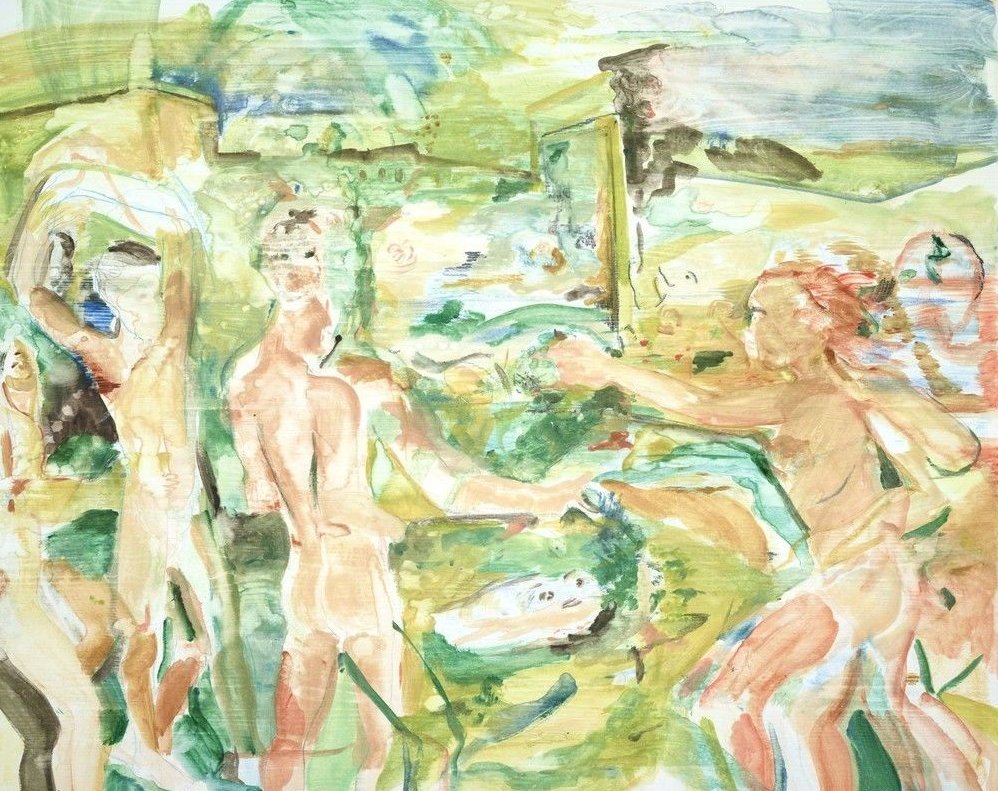
Image Credit: Cecily Brown Untitled, 2014 Two Palms

